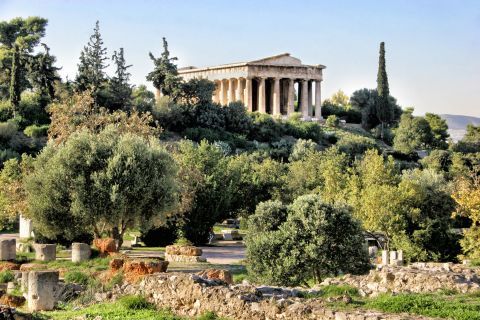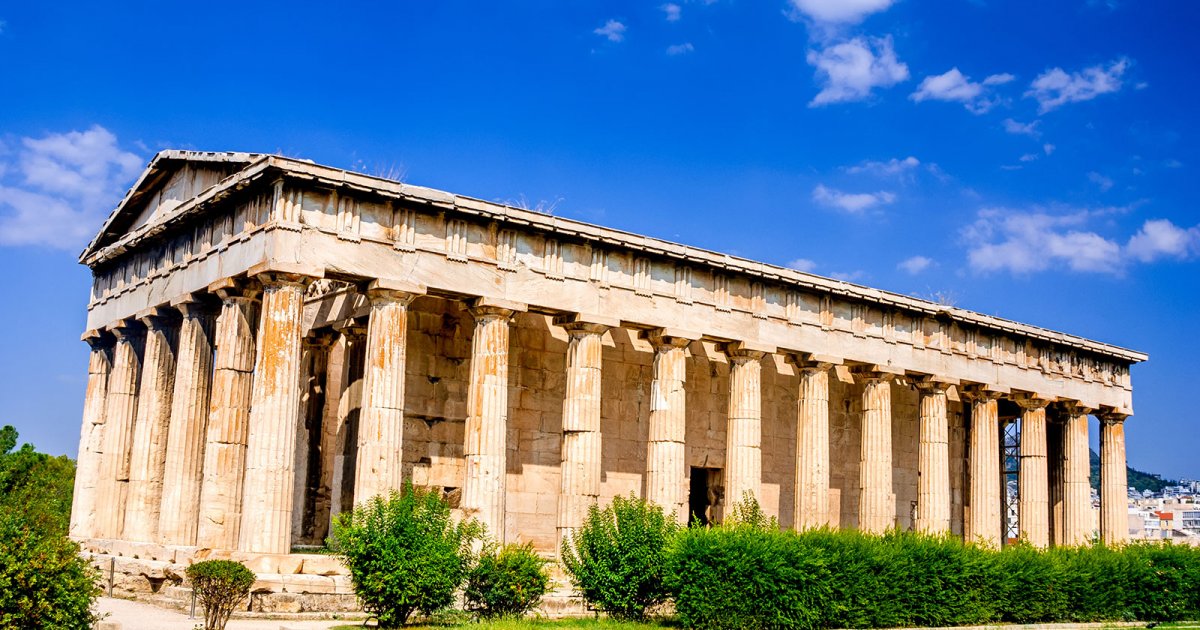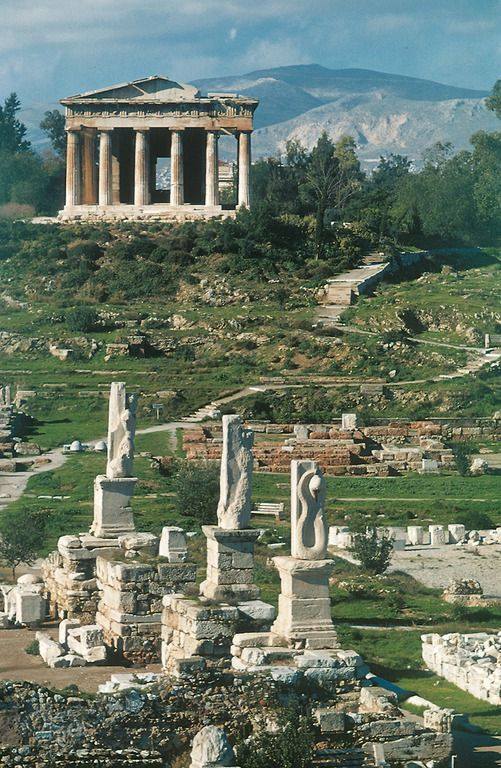What is the Temple of Hephaestus?
The Temple of Hephaestus is a remarkably well-preserved 5th-century Doric temple dedicated to the worship of Hephaestus and Athena. It is situated on the west side of the Agora in Athens.
Temple of Hephaestus History
The Temple of Hephaestus was constructed on the Kolonos Agoraios, a hill overlooking the western side of the Agora, a center for the workshops of Athenian craftsmen where laborers sought day work. The location was chosen strategically, as it was here that two deities were jointly worshipped: Hephaestus, the protector of blacksmiths and metallurgists, and Athena, the patroness of potters and crafts.

Erected in the mid-5th century BC, the temple is an exemplar of Doric architecture, with a plan reminiscent of the Parthenon but on a smaller scale. It was part of the grand building program initiated by the statesman Pericles, aimed at glorifying Athens. Like the Parthenon, the Temple of Hephaestus featured rich sculptural decorations depicting various episodes from Greek mythology, including the labors of Hercules and the birth of Athena. The temple is also known as the ‘Theseion’ due to the mistaken belief that the Athenian hero Theseus was buried there. Theseus and his deeds are another prominent decorative theme of the building, with the hero represented in several sculptures.

Originally, the temple housed two bronze cult statues of Athena and Hephaestus, created by the sculptor Alcamenes. The building was surrounded by a wall extending to the north and east. Archaeological excavations have uncovered remnants of flowerpots, indicating that an elaborate garden was maintained around the temple.
Temple of Hephaestus Details
The top of the hill was kept free from other buildings, offering an excellent view of the Agora square, where various athletic contests, religious festivals, and processions were held. From the Hephaestion, Athenians could admire the procession of the Greater Panathenaea, the most important festival in Athens, which passed through the Agora and culminated on the Acropolis. The Chalceia, a festival honoring Athena and Hephaestus as deities of crafts, likely centered on this sanctuary and was mainly celebrated by the craftsmen working in the area.

Like many ancient sites in Athens, the temple was later converted into a Christian church dedicated to Agios Georgios (Saint George), probably during the 5th century AD. This conversion, which asserted the superiority of Christianity over paganism, is why the building survives today in such excellent condition, making it one of the best-preserved ancient temples in Greece.




